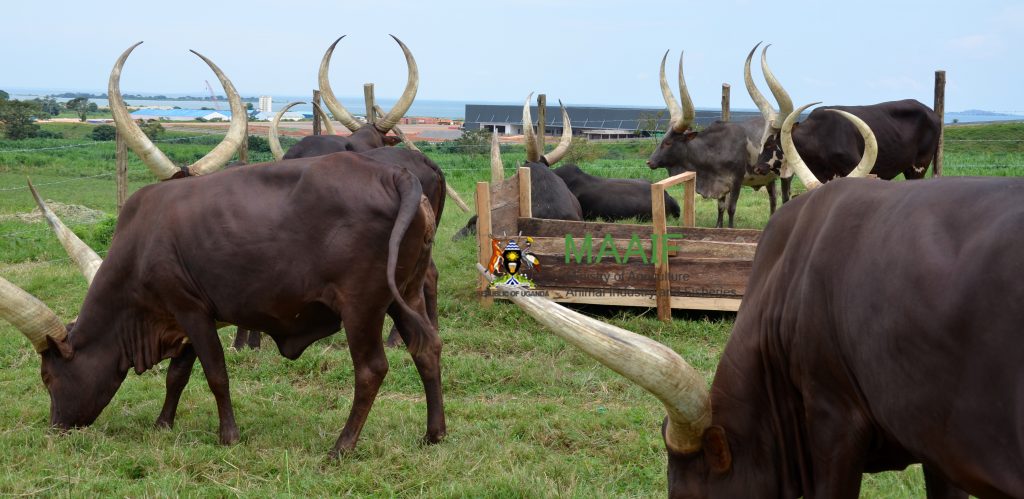
Lusenke Stock Farm to be fully revamped to supply improved breeds and 30,000 chicks per week for 11 districts
Kayunga 21st October 2019. The districts of Kayunga, Buikwe, Buvuma, Mukono, Wakiso, Mpigi, Luweero, Nakaseke and Nakasongola are set to benefit from the completion of an upgrade of the 4,480-acre Lusenke Stock Farm (7 square miles).
The revamp of the Stock Farm which is situated in Busana sub-county of Kayunga district in central Uganda and lies astride the River Nile is being carried out by through the National Animal Genetic Resources Center and Databank (NAGRC&DB).
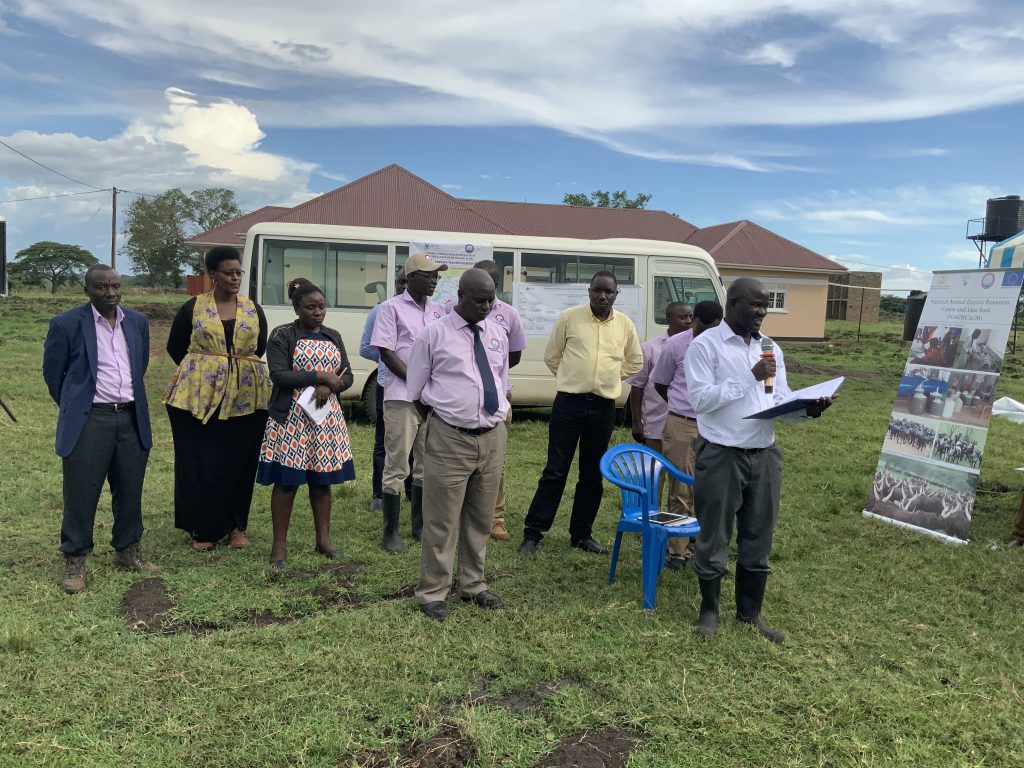
Ongoing Revamp of Stock Farms and rollout of the Community Breeding Programme
The Stock Farm will serve as a center for providing an average of 30,000 chicks per week, providing improved and highly-productive animal breeds through the Community breeding programme that is being implemented in other parts of the country and training in livestock enterprise development.
NAGRC&DB which is the livestock sub-sector Agency of the Ministry of Agriculture Animal Industry and Fisheries has eleven (11) livestock farms and ranches situated in different agro-ecological zones with varying livestock production systems.
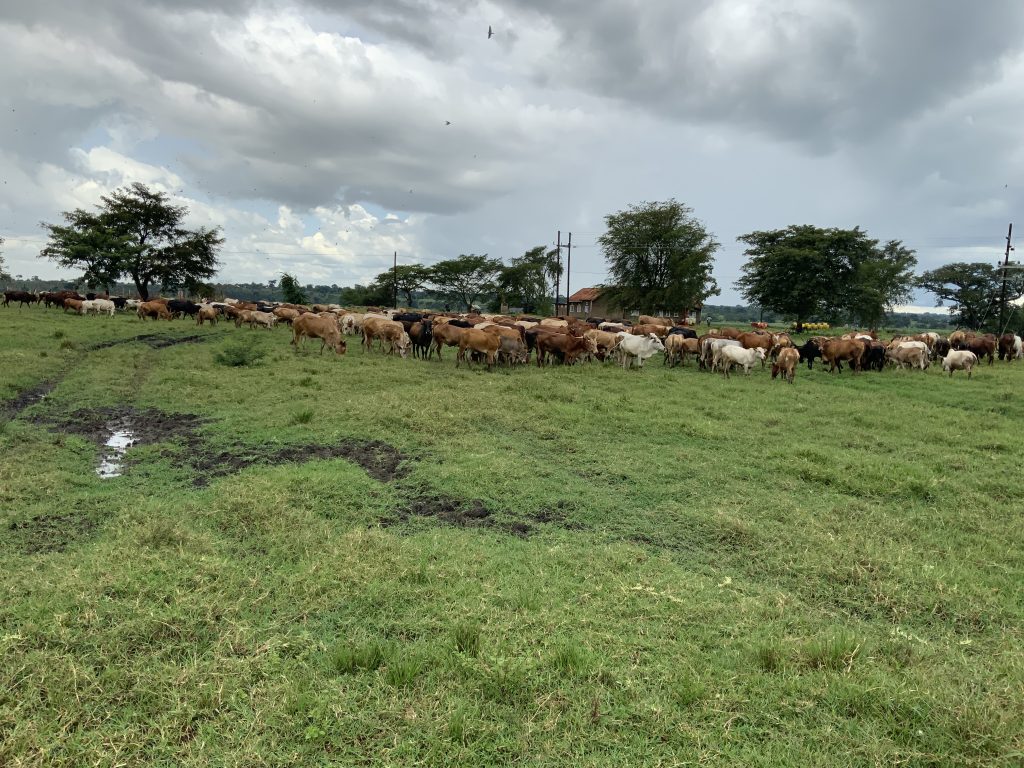
These farms serve the purpose of breeding and availing to farmers’ quality breeding stock at affordable prices.
However, due to past wars and civil strife, they were impacted negatively hence leading to loss of most of the stock and destruction of key farm infrastructure. In order to revitalize the Lusenke stock farm, the Lusenke Livestock Transformation Project (LULITRA) was designed.
The project seeks to establish Lusenke Stock farm as a center of excellence, to among other aspects support the surrounding communities with quality livestock breeds as well as build their capacity to serve as reference points/ demonstration farms in aspects of animal production and farm management practices as well as export oriented production for sustainable and profitable livestock enterprises.

The project commenced in July, 2019 and is expected to last for 5 years until June 2024. It is envisioned that by the end of the project people’s lives, especially smallholder livestock farmers would have been transformed through improved livestock production and productivity.
The Lusenke Stock Farm and project area
The Lusenke stock farm covers approximately 4,480 acres (7 square miles) and is situated in Busana sub-county of Kayunga district in central Uganda and lies astride the River Nile.
The project will be implemented in the North Buganda sub-region which is part of the central region in Buganda. The project area, North Buganda has 22% of the population leaving below the poverty line in comparison to 5.9% in Kampala.
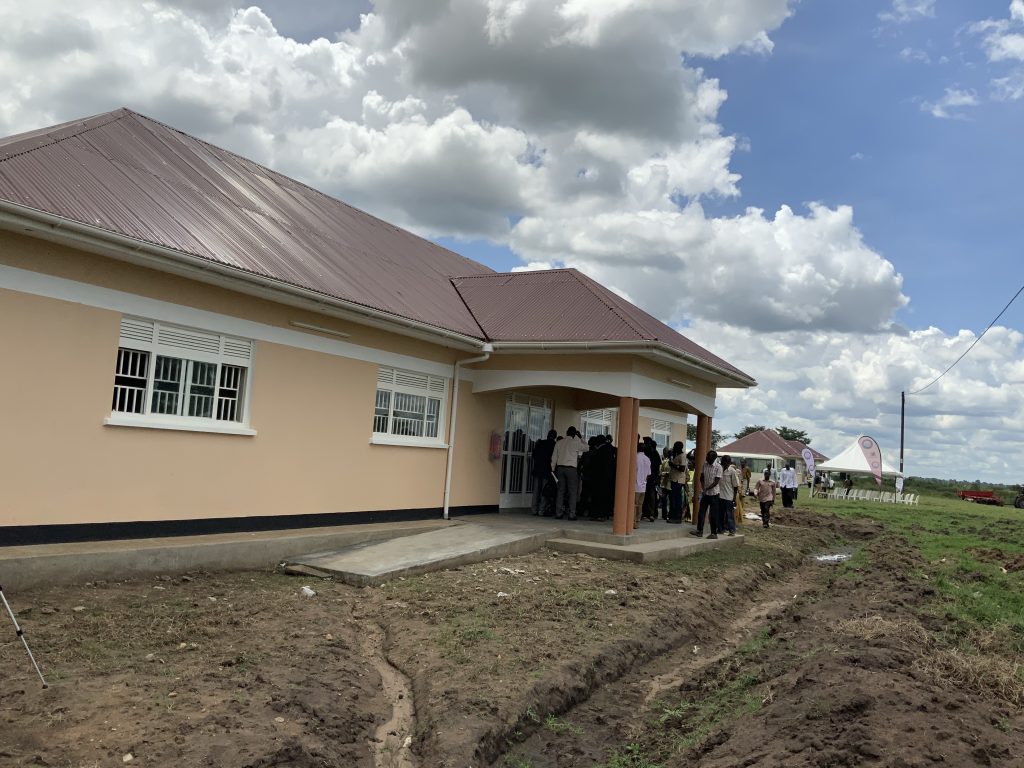
Furthermore, the average household monthly income in the project area is UGX 463,288, slightly higher than the national average of 416,000 but lower than for Kampala at 985,000.
The project will therefore be implemented in the following districts: Kayunga, Mukono, Buikwe, Wakiso, Nakasongola, Buvuma Island, Luwero and Nakeseke.
The project aims at addressing the following constraints;
1. Shortage of Livestock numbers and Low Livestock Productivity
2. Endemic Diseases
3. Inadequate feed resources i.e. quality and quantity
4. Scarcity of Water for Livestock
5. Inadequate Infrastructure for Livestock production
6. Poor Livestock Market Information Network
7. Inadequate skills and knowledge by the breeding workforce at sub county level.
The achievement of these will contribute to the achievement of the overall sector objective which is “To Transform Subsistence Farming into Commercial Agriculture.”
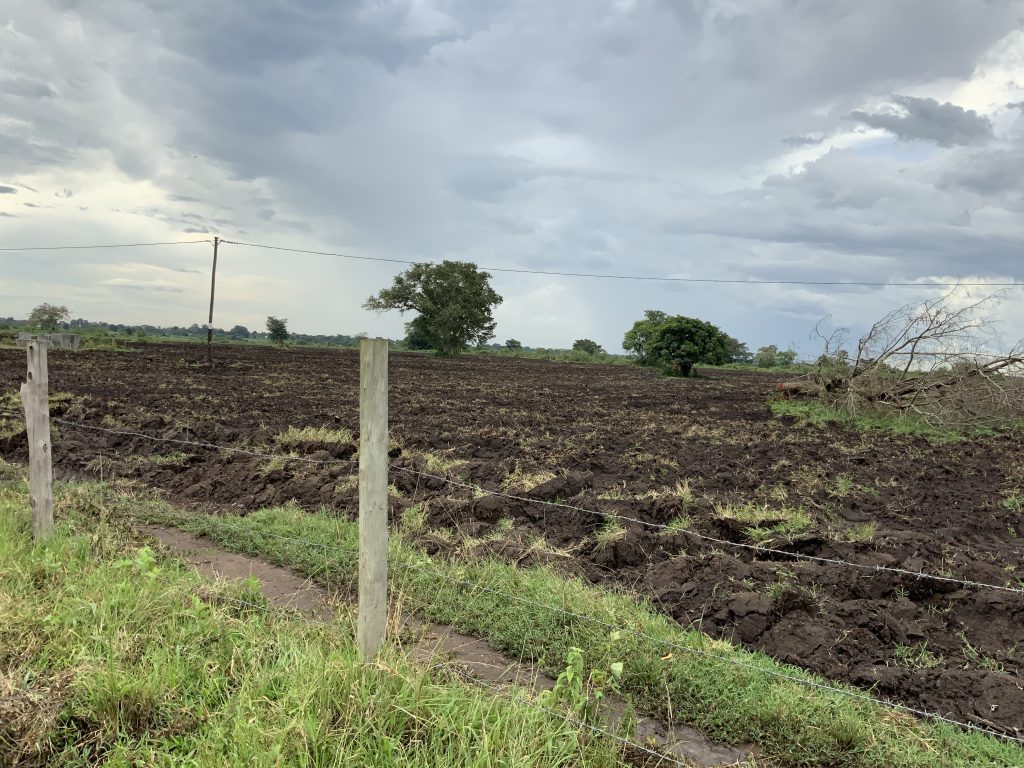
Opportunities and existing potential
Worldwide, there is an increase in demand for Livestock products arising from the global trend towards higher populations, higher incomes and increasing urbanization. Studies have projected that by 2020, global meat demand that stood at 208 metric tons in 1997, will have grown by 57%. Developing countries alone would consume 102 metric tonnes more than they consumed in 1997.
Therefore, given Uganda’s abundant pasture and indigenous animal breeds, which are well adapted and with good meat quality the project has immense potential to quickly transform Uganda’s economy through livestock.
It is worthy to note that Uganda has 241,038 km2 of arable land, 44% of which is available for grazing, and 25% being water bodies. An equatorial location, an ideal tropical climate (regular and relatively abundant rainfall and dry seasons of limited duration and severity) and fertile soils, which are suited for agricultural production further attests to the ability of the agricultural sector to transform the economy quickly.
Stock farmers have exhibited interest to invest in the livestock industry, thereby increasing the chances for adoption of the recommended technologies geared towards promotion of strategic production for export. Also sufficient agro-industrial by-products that exist for supplementary feeding in the dry season make livestock the best avenue to drive economic development in Uganda.
This project therefore, seeks to harness meaningful gains from this potential through promotion of livestock production, productivity and marketing.

General Objective
The project’s main objective is to enhance livestock production and productivity for improved livelihoods, food security, incomes and export in the North Buganda sub-region of Uganda.
The target beneficiaries for the project are farmers involved in livestock production in the nine districts that make up the project area. These districts include Kayunga, Buikwe, Buvuma, Mukono, Wakiso, Mpigi, Luweero, Nakaseke and Nakasongola. Farmers in these districts will be categorized into nucleus and small holder farmers for the different enterprises. Their categorization will depend on the herd/flock size, land acreage, willingness to participate in the project activities, availability of appropriate livestock management infrastructure at their farms and ability to engage in massive fodder production.

The project will support nucleus farms with the necessary inputs and breeding materials as well as train them in improved animal husbandry practices through the existing extension system. The small holder farmers who are the prime target of this project will benefit through formation of clusters around the selected nucleus farmers in each district. The small holder farmers will depend on the nucleus farmers to access high quality animal genetics.
Notes for editors
About the Ministry of Agriculture, Animal Industry and Fisheries (MAAIF)
The Ministry of Agriculture, Animal Industry and Fisheries is a Ministry in the Government of Uganda charged with creating an enabling environment in the Agricultural Sector.
The Ministry formulates, reviews and implement national policies, plans, strategies, regulations and standards and enforce laws, regulations and standards along the value chain of crops, livestock and fisheries.
Vision: A competitive, profitable and sustainable agricultural sector.
Mission: To transform subsistence farming to commercial agriculture.
Strategic Objectives
- To initiate the formulation and review of the policy and legal framework for the sector
- To establish and implement systems for service provision in the sector
- To strengthen and implement strategies, regulatory framework, standards, institutional structures and infrastructure for quality assurance and increased quantities of agricultural products to access and sustain local, regional and export markets
- To design and implement sustainable capacity building programmes for stakeholders in the agricultural sector through training, re-tooling, infrastructure, provision of logistics and ICT
- To develop strategies for sustainable food security
- To develop appropriate agricultural technologies for improved agricultural production, productivity and value addition through research
- To develop effective collaborative mechanisms with affiliated institutions and
- To take lead and establish a system and institutional framework for agricultural data collection, analyses, storage and dissemination to stakeholders including Uganda Bureau of Statistics.
The Ministry of Agriculture, Animal Industry and Fisheries (MAAIF) is made up of four Directorates including the Directorate of Crop Resources, Directorate of Animal Resources, Directorate of Agricultural Extension Services and the Directorate of Fisheries Resources each with Departments, Divisions and Partnership Projects.
The Departments of the Ministry which do not fall directly in the above include the Department of Agricultural Planning and Development, the Human Resource Department, the Department of Finance and Administration and the Department of Agricultural Infrastructure, Mechanisation and Water for Agricultural Production.
The Ministry is also made up of seven Agencies including the National Agricultural Research Organisation (NARO), the National Agricultural Advisory Services (NAADS), Cotton Development Organisation (CDO), Dairy Development Authority (DDA), Uganda Coffee Development Authority (UCDA) and Coordinating Office for the Control of Trypanosomiasis in Uganda (COCTU) and the National Animal Genetic Resources Centre and Databank (NAGRC&DB).
About the National Animal Genetic Resources Center and Data Bank
The National Animal Genetic Resources Centre and Data Bank (NAGRC & DB) is the livestock sub-sector Agency of the Ministry of Agriculture, Animal Industry and Fisheries.
NAGRC & DB was established by the Animal Breeding Act, 2001. It’s one of the statutory semi-autonomous bodies of MAAIF. Formation of NAGRC & DB was part of the fulfilment of the aspirations in the National Animal Breeding Policy (1997) document and the action plan for its implementation, providing guidelines to all actors in the animal breeding and production value-chain. These actors include agro-input suppliers, farmers, companies, researchers, extension workers and civic leaders on suitable breeds for the various ecological and production systems. NAGRC & DB ensures national capacity development and management in the following technical areas: alternative breeding programmes; import, export and trade in genetic materials; breeding and management systems for conservation and sustainable use of indigenous genetic resources; and use of modern breeding technologies in the country. NAGRC & DB was established with a twofold mandate, namely: (i) to play a leading role in the commercialization of animal breeding activities in Uganda; and (ii) to carry out development activities that enhance animal Genetic improvement and productivity.
NAGRC & DB has eleven (11) livestock farms and ranches situated in different agro-ecological zones with varying livestock production systems. These farms serve the purpose of breeding and availing to farmers’ quality breeding stock at affordable prices. However, due to past wars and civil strife, they were impacted negatively hence leading to loss of most of the stock and destruction of key farm infrastructure. Through this project therefore, NAGRC&DB seeks to revitalize center of excellence to among other aspects support the surrounding communities with quality livestock breeds as well as build their capacity to serve as reference points/ demonstration farms for livestock farmers in aspects of animal production and farm management practices as well as export oriented production for sustainable and profitable livestock enterprises.
The Ministry formulates, reviews and implement national policies, plans, strategies, regulations and standards and enforce laws, regulations and standards along the value chain of crops, livestock and fisheries.
Vision: A competitive, profitable and sustainable agricultural sector.
Mission: To transform subsistence farming to commercial agriculture.
Strategic Objectives
- To initiate the formulation and review of the policy and legal framework for the sector
- To establish and implement systems for service provision in the sector
- To strengthen and implement strategies, regulatory framework, standards, institutional structures and infrastructure for quality assurance and increased quantities of agricultural products to access and sustain local, regional and export markets
- To design and implement sustainable capacity building programmes for stakeholders in the agricultural sector through training, re-tooling, infrastructure, provision of logistics and ICT
- To develop strategies for sustainable food security
- To develop appropriate agricultural technologies for improved agricultural production, productivity and value addition through research
- To develop effective collaborative mechanisms with affiliated institutions and
- To take lead and establish a system and institutional framework for agricultural data collection, analyses, storage and dissemination to stakeholders including Uganda Bureau of Statistics.
The Ministry of Agriculture, Animal Industry and Fisheries (MAAIF) is made up of four Directorates including the Directorate of Crop Resources, Directorate of Animal Resources, Directorate of Agricultural Extension Services and the Directorate of Fisheries Resources each with Departments, Divisions and Partnership Projects.
The Departments of the Ministry which do not fall directly in the above include the Department of Agricultural Planning and Development, the Human Resource Department, the Department of Finance and Administration and the Department of Agricultural Infrastructure, Mechanisation and Water for Agricultural Production.
The Ministry is also made up of seven Agencies including the National Agricultural Research Organisation (NARO), the National Agricultural Advisory Services (NAADS), Cotton Development Organisation (CDO), Dairy Development Authority (DDA), Uganda Coffee Development Authority (UCDA) and Coordinating Office for the Control of Trypanosomiasis in Uganda (COCTU) and the National Animal Genetic Resources Centre and Databank (NAGRC&DB).
About the National Animal Genetic Resources Center and Data Bank
The National Animal Genetic Resources Centre and Data Bank (NAGRC & DB) is the livestock sub-sector Agency of the Ministry of Agriculture, Animal Industry and Fisheries.
NAGRC & DB was established by the Animal Breeding Act, 2001. It’s one of the statutory semi-autonomous bodies of MAAIF. Formation of NAGRC & DB was part of the fulfilment of the aspirations in the National Animal Breeding Policy (1997) document and the action plan for its implementation, providing guidelines to all actors in the animal breeding and production value-chain. These actors include agro-input suppliers, farmers, companies, researchers, extension workers and civic leaders on suitable breeds for the various ecological and production systems. NAGRC & DB ensures national capacity development and management in the following technical areas: alternative breeding programmes; import, export and trade in genetic materials; breeding and management systems for conservation and sustainable use of indigenous genetic resources; and use of modern breeding technologies in the country. NAGRC & DB was established with a twofold mandate, namely: (i) to play a leading role in the commercialization of animal breeding activities in Uganda; and (ii) to carry out development activities that enhance animal Genetic improvement and productivity.
NAGRC & DB has eleven (11) livestock farms and ranches situated in different agro-ecological zones with varying livestock production systems. These farms serve the purpose of breeding and availing to farmers’ quality breeding stock at affordable prices. However, due to past wars and civil strife, they were impacted negatively hence leading to loss of most of the stock and destruction of key farm infrastructure. Through this project therefore, NAGRC&DB seeks to revitalize center of excellence to among other aspects support the surrounding communities with quality livestock breeds as well as build their capacity to serve as reference points/ demonstration farms for livestock farmers in aspects of animal production and farm management practices as well as export oriented production for sustainable and profitable livestock enterprises.
Community-based animal breeding programmes
Livestock breeding interventions can be planned well, designed and implemented by livestock value chain actors in cooperation with technical stakeholders to achieve efficient management of animal genetic resources for improved business development, wealth creation and sustainable livelihoods.
Community breeding models are designed to effectively allow for ownership and sustainability of animal genetic improvement efforts as well as effective utilization and conservation of animal genetic resources.
The purpose of community animal breeding programmes is to involve livestock farming communities (who are usually resource constrained and marginalized) in livestock breeding especially for the purposes of increasing production and productivity leading to improved livelihoods of poor livestock farmers.
Livestock breeding services in Uganda have over the years slowed down due to numerous reasons, including but not limited to inadequate Artificial Insemination (AI) services, farmer’s poor perception of AI, low conception rates and low access to AI inputs and high quality genetics.
This scenario has culminated in farmers failing to adopt appropriate technology. Consequently, there has been rampant inbreeding that has resulted into herd depression manifested by a decline in production and productivity. There is therefore need for livestock farming communities to participate and/or carry out breeding activities.
For related inquiries and accreditation, contact Solomon Kalema – Senior Communications Officer Ministry of Agriculture Animal Industry and Fisheries. Email: [email protected]
